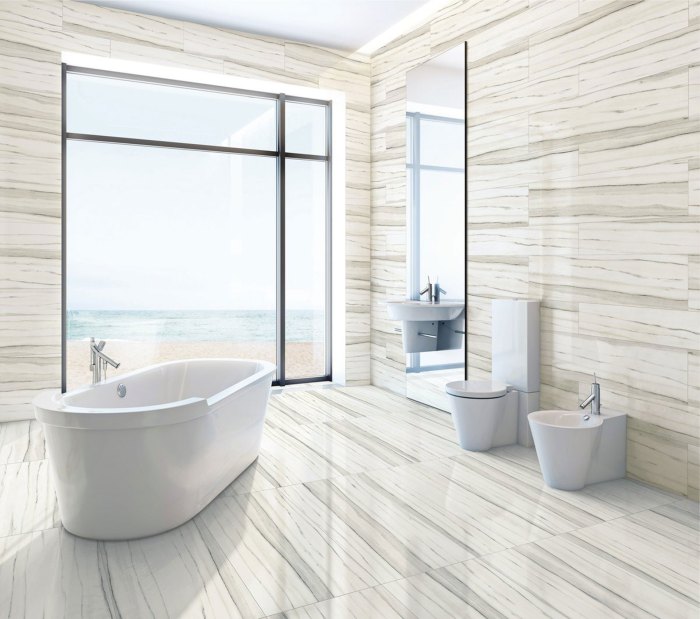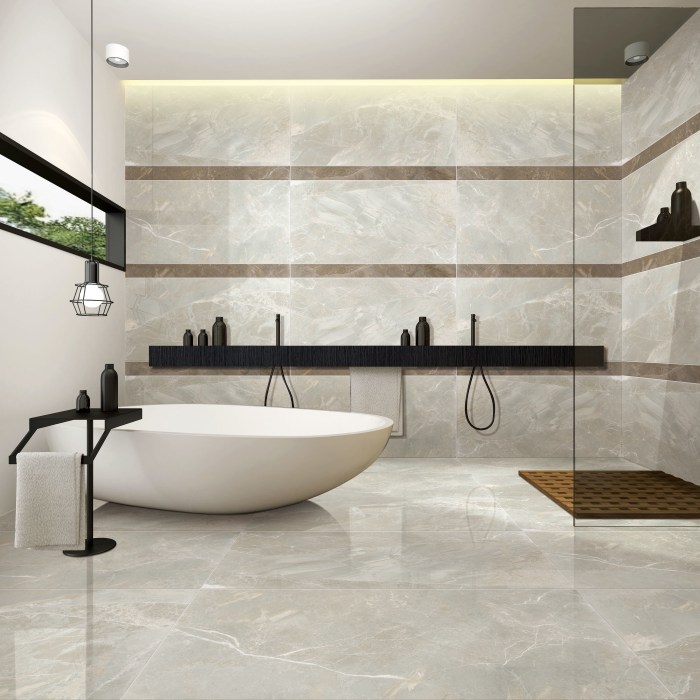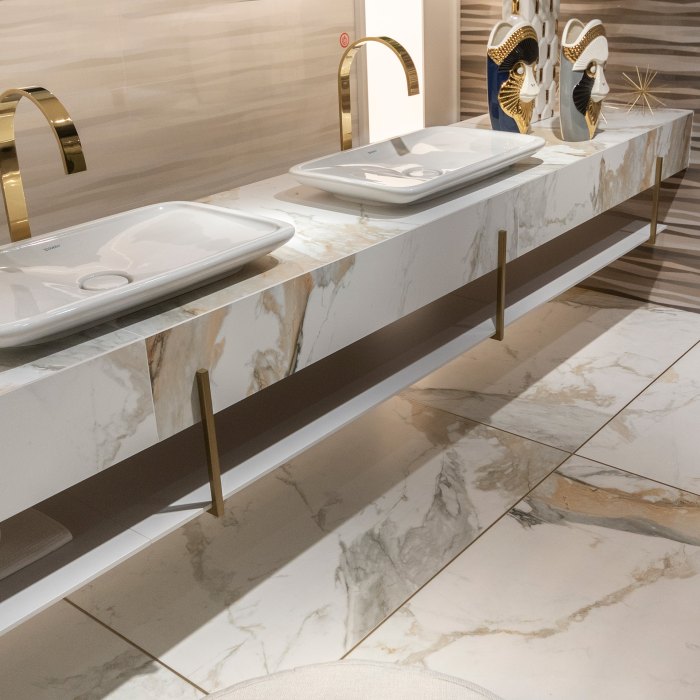When selecting bathroom flooring, porcelain and ceramic tiles are often the top contenders. Both materials offer durability, water resistance, and aesthetic appeal. However, porcelain stands out with its superior qualities that make it an exceptional choice for bathrooms.
In this comprehensive guide, we will delve into the advantages of porcelain over ceramic bathroom floors, exploring its exceptional durability, water resistance, aesthetic versatility, hygiene, and cost-effectiveness. We will also provide answers to commonly asked questions to ensure you make an informed decision for your bathroom renovation.
Durability and Longevity
Porcelain tiles are renowned for their exceptional durability, outperforming ceramic tiles in resisting scratches, chips, and cracks. This enhanced resilience is attributed to porcelain’s higher density and hardness, making it an ideal choice for high-traffic areas like kitchens, bathrooms, and entryways.
Resistance to Scratches and Abrasion
Porcelain’s superior hardness effectively resists scratches and abrasions caused by daily wear and tear, such as foot traffic, furniture movement, and cleaning. This durability ensures that porcelain floors maintain their pristine appearance for an extended period, even in areas prone to heavy usage.
Water Resistance and Stain Resistance
Porcelain boasts superior water resistance compared to ceramic due to its remarkably low porosity. This characteristic renders it impervious to water penetration, creating a surface that is both durable and easy to maintain.
The low porosity of porcelain prevents the absorption of liquids, making it an ideal choice for bathroom floors. Common bathroom liquids such as water, shampoo, soap, and cleaning agents cannot penetrate the surface, ensuring that stains do not form.
Aesthetic Appeal and Versatility
Porcelain tiles offer a wide range of colors, patterns, and textures, making them suitable for various bathroom styles. From classic marble-like designs to contemporary geometric patterns, porcelain tiles can complement any bathroom décor.
Color and Pattern Variety
Porcelain tiles are available in a vast array of colors, from subtle neutrals to bold hues. They can also mimic the appearance of natural materials like stone, wood, and marble, providing a realistic and stylish look.
Texture and Finish
Porcelain tiles come in various textures, from smooth and glossy to textured and matte. Textured tiles add depth and character to a bathroom, while glossy tiles create a more polished and modern look.
Hygiene and Maintenance
The non-porous surface of porcelain tiles makes them less prone to bacteria growth and mold accumulation, ensuring a hygienic bathroom environment. This is particularly important in areas like bathrooms where moisture and humidity are prevalent.
Porcelain tiles are also incredibly easy to clean and maintain. Their smooth surface allows for quick and effortless removal of dirt, grime, and spills. Regular sweeping or mopping with a mild detergent is sufficient to keep porcelain bathroom floors spotless.
Recommended Cleaning Methods and Products
- Regular sweeping or vacuuming to remove loose dirt and debris.
- Mopping with a pH-neutral cleaner and warm water.
- Using a mild dish soap solution for stubborn stains.
- Avoiding abrasive cleaners, steel wool, or scouring pads, as they can scratch the surface of the tiles.
- Rinsing the floor thoroughly after cleaning to remove any soap residue.
Installation and Cost
Porcelain and ceramic tiles offer distinct installation processes and cost considerations. Let’s explore the differences and provide an estimate for a porcelain bathroom floor installation.
Methods of Installation
Porcelain tiles can be installed using various methods, including:
- Thin-set Method: Porcelain tiles are adhered to the subfloor using a thin-set mortar, providing a strong and durable bond.
- Mastic Method: Mastic adhesive is applied to the back of the tiles and pressed onto the subfloor, suitable for smaller tile sizes and non-heavy traffic areas.
- Dry-Lay Method: Porcelain tiles are placed on a layer of sand or leveling compound, ideal for temporary installations or areas with moisture concerns.
Ceramic tiles, on the other hand, are typically installed using thin-set mortar or mastic methods.
Cost of Porcelain Bathroom Floors
The cost of a porcelain bathroom floor varies depending on factors such as tile size, design, and labor rates. As a general estimate, porcelain tiles range from $5 to $15 per square foot, while labor costs can add $5 to $10 per square foot.
Table: Installation and Cost Differences
| Porcelain | Ceramic | |
|---|---|---|
| Installation Methods | Thin-set, Mastic, Dry-Lay | Thin-set, Mastic |
| Material Cost | $5-$15 per square foot | $3-$8 per square foot |
| Labor Cost | $5-$10 per square foot | $4-$8 per square foot |
Last Point
In conclusion, porcelain tiles offer a multitude of advantages over ceramic tiles for bathroom flooring. Its exceptional durability, water resistance, aesthetic versatility, hygiene, and cost-effectiveness make it the superior choice for creating a beautiful and functional bathroom space. Whether you prefer classic or contemporary designs, porcelain tiles can elevate your bathroom’s style while providing years of reliable performance.



